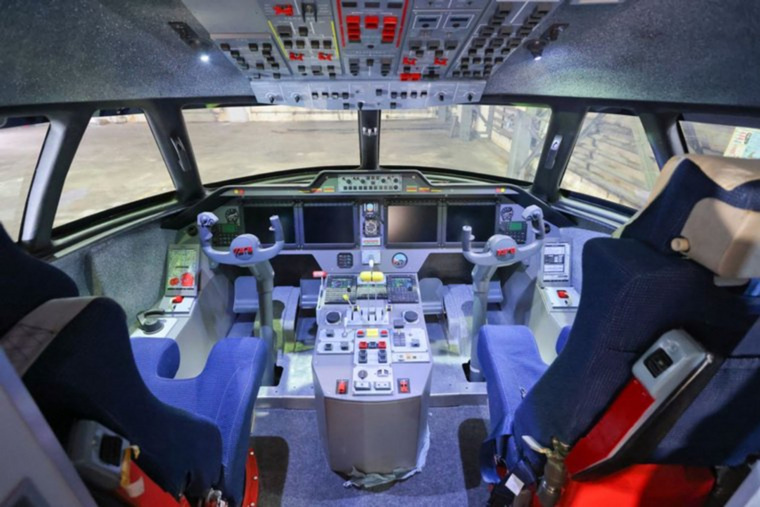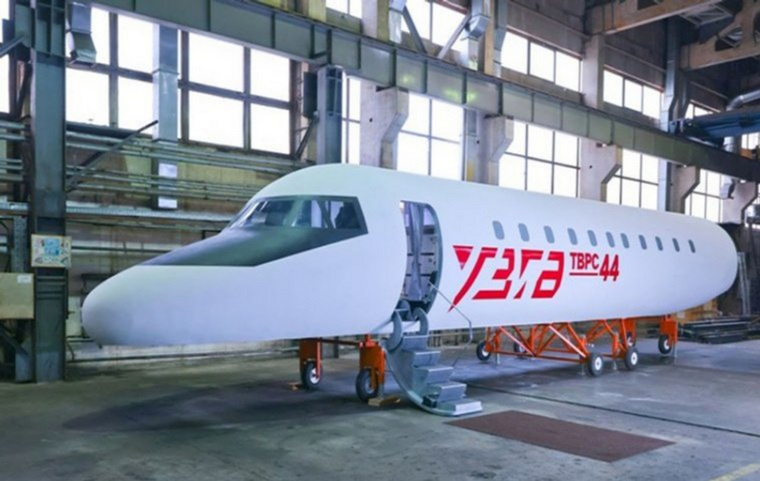"In an import-substituting guise": how the program to create the SSJ New aircraft is being implemented, by Alexey Latyshev and Vladimir Duyun for RTRUSSIA. 01.11.2023.
Rostec reported that the airframe of the SSJ New short-haul passenger aircraft was delivered to Novosibirsk for certification tests. The state corporation specified that at the first stage of static tests, the wing, fuselage and other elements of the aircraft will be tested for various types of load. SSJ New is an import-substituting version of the Sukhoi Superjet 100. According to analysts, today the Russian industry is able to provide the liner with everything necessary.
The airframe of the new Russian civil airliner Sukhoi Superjet New (SSJ New) was delivered to Novosibirsk for strength tests, the press service of the state corporation Rostec reported.
“The airframe of the imported SSJ New aircraft, manufactured at the production center of the Irkut Corporation in Komsomolsk-on-Amur of the United Aircraft Corporation specifically for static testing, was delivered to Novosibirsk,” the company said.
Certification tests will take place in the department of fatigue and static strength of the Siberian Research Institute of Aviation named after Chaplygin (SibNIA), which is part of the National Research Center "Institute named after Zhukovsky".
As clarified in Rostec, the SSJ New airframe is being tested to confirm its static strength and determine the conditions for safe operation. The tests were carried out due to structural changes in the wing and fuselage of the aircraft, the transition to PD-8 engines and the installation of a new chassis design.
At the first stage of testing at SibNIA, the wing, fuselage, landing gear attachment points, as well as the PD-8 pylon and attachment points will be tested for various types of load.
Andrey Boginsky, General Director of the Irkut Corporation and Deputy Head of the UAC for Civil Aviation, specified that this stage of testing is planned to be completed in the fall of 2023.
“Our production center in Komsomolsk-on-Amur is already shipping the second airframe for ground testing of the SSJ New aircraft, the first airframe was delivered to TsAGI in July last year. We plan to complete the first stage of static testing at SibNIA this fall, and the results obtained, along with the results of flight tests, will be used to certify the aircraft in a new import-substituting appearance. It is planned to obtain the relevant approvals from the Federal Air Transport Agency for the main changes to the design by the end of 2023, ”the press service of Rostec quotes him as saying.
As previously reported, in November 2022, the SSJ New model with PD-8 engines was tested at the Zhukovsky Central Aerohydrodynamic Institute (TsAGI). Flight tests of the liner and a new stage of work at TsAGI are scheduled for 2023.
Updated Superjet
Recall that SSJ New is a new version of the Sukhoi Superjet 100 short-haul aircraft, which has been operated by airlines for more than ten years.
According to the data of the Transport Clearing House, in 2019, the SSJ-100 accounted for over 51% of the total passenger turnover carried out by Russian air carriers on all civil regional jet and turboprop aircraft.
However, after the West imposed sanctions against Russia, the operation of this liner became more complicated. The fact is that the Superjet was created in the framework of broad cooperation with foreign companies, so many of its key components were developed abroad.
This approach was due to the fact that in the early 2000s, most domestic manufacturers of systems and avionics were not yet ready to supply components for the SSJ-100, which could be certified according to tightened aviation rules, Rostec explained. In particular, the SaM146 engines were created by the Russian company UEC-Saturn together with the French company Snecma.
However, over the past years, the situation has changed dramatically: Russian enterprises have been modernized and now, under sanctions, they can become an alternative to foreign suppliers, cooperation with which turned out to be impossible under the new conditions.
According to analysts, one of the main innovations in the SSJ New was the replacement of the engine. The liner will be equipped with a domestic PD-8 power unit developed by the United Engine Corporation.
Bench tests of the first experimental PD-8 were completed in May 2022, and in December , flight tests began on the Il-76LL flying laboratory.
On-board radio-electronic equipment systems for the SSJ New are being developed by the enterprises of Radioelectronic Technologies Concern JSC (part of Rostec), and the power supply system is being developed by the Ufa Aggregate Production Association. In turn, the Ufa Research and Production Enterprise Molniya is developing an engine vibration control system, a computer for an integrated air conditioning system and an icing alarm.
According to Sergey Chemezov, CEO of Rostec, about 97% of foreign components will be replaced in the new aircraft. At the same time, part of the equipment will be unified with the latest Russian airliner MS-21 .
As noted in the state corporation, import substitution is not the only goal of creating a new version of SSJ. The developers also intend to increase the overall efficiency of the aircraft through the introduction of domestic systems of a new generation.
It is worth noting that there is already a demand for the aircraft being created among airlines. In September 2022, UAC and Aeroflot signed an agreement of intent to deliver 339 Russian-made aircraft between 2023 and 2030 . Among them - 89 SSJ New.
The first liners should be delivered to the company this year, as Chemezov said earlier.
“In 2023, the first flight of the SSJ New with Russian PD-8 engines and the start of serial production are planned. The first cars will go to the airlines of the Aeroflot group: the plans for 2023 include the delivery of two aircraft, and in subsequent years - reaching the rate of 20 airliners annually, ”said the head of Rostec.
In turn, the head of the Ministry of Industry and Trade of the Russian Federation, Denis Manturov, at a meeting of the president with members of the government on January 11, said that in 2023-2025, deliveries of 63 aircraft to Aeroflot were planned: 34 SSJ New, 18 MS-21 and 11 Tu-214.
"Industry on the Rise"
As Roman Gusarov, editor-in-chief of the Avia.ru portal, recalled, work on the creation of the SSJ-100 began in difficult years for the domestic aviation industry.
“The SSJ-100 aircraft and its entire ideology were laid down in the early and mid-2000s. These were hard times: our aviation industry lay on its side and was not ready to implement such an ambitious project as a modern civilian airliner. Therefore, foreign companies were involved, which provided their components. As a result, despite the fact that the Superjet was 100% domestically developed, it was filled with foreign products. This also applied to the engine, ”Gusarov explained in a conversation with RT.
However, over time, it became obvious that such international cooperation has many disadvantages, the specialist stated.
“As it turned out, foreign partners were not very willing to participate in the development of this project. In addition, SSJ's "childhood illnesses" were associated with those same imported components. Foreign companies charged very high prices for them. Even before the imposition of sanctions, it became clear that it was necessary to slowly look for an alternative to imported suppliers. And in 2022, there was a need for complete import substitution,” the analyst noted.
According to Vladimir Popov, Deputy Editor-in-Chief of the Aviapanorama magazine, the new Superjet is already being created entirely on the domestic industrial platform.
“Production will be established on a Russian base, with all our components. The key point is the replacement of power plants with domestic PD-8 engines. It will be a high-quality Russian product that will in no way be inferior to foreign analogues. The control system, life support, pressurization, ventilation, hydraulic system, etc. will also be Russian, ”said the interlocutor of RT.
According to Roman Gusarov, today such cooperation with Western companies is no longer necessary, and Russia is unlikely to return to this experience. In recent years, as the specialist emphasizes, gigantic work has been carried out to modernize enterprises, develop technologies and train personnel.
“Today, I do not see any components and engines that our engineers could not create: the Russian aviation industry is on the rise,” the analyst concluded.
https://russian.rt.com/russia/article/1096343-ssj-new-rosteh-ispytaniya








